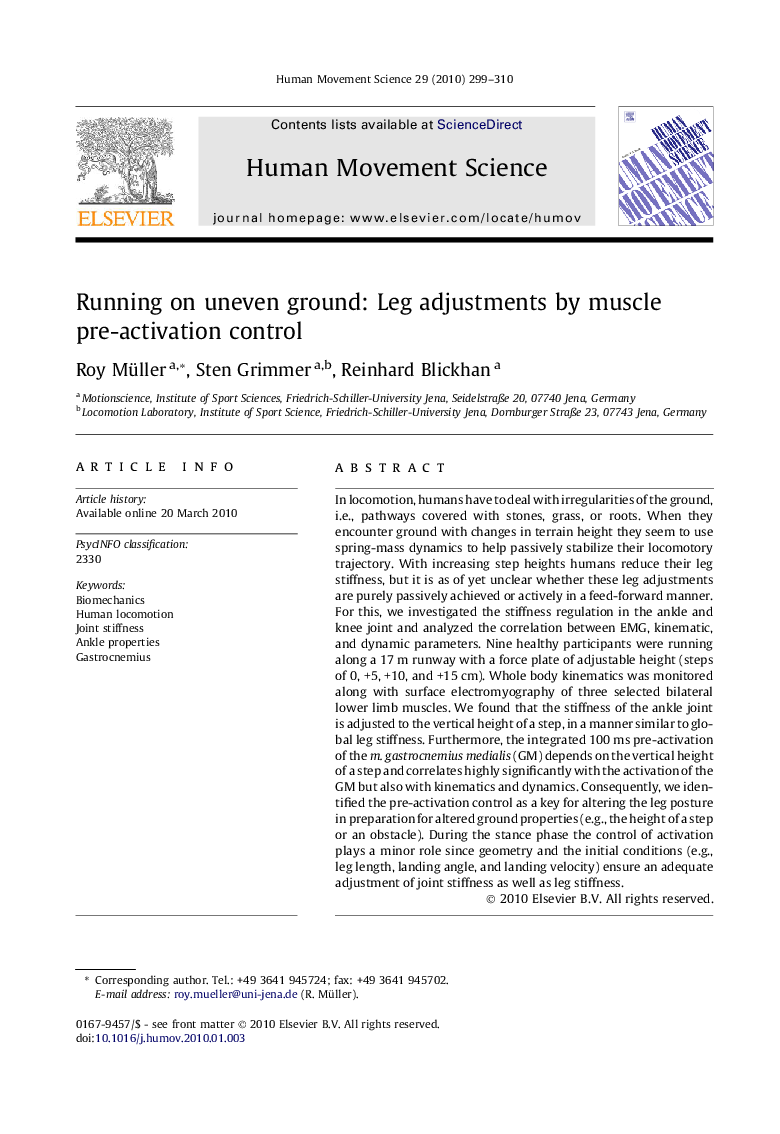| Article ID | Journal | Published Year | Pages | File Type |
|---|---|---|---|---|
| 928733 | Human Movement Science | 2010 | 12 Pages |
In locomotion, humans have to deal with irregularities of the ground, i.e., pathways covered with stones, grass, or roots. When they encounter ground with changes in terrain height they seem to use spring-mass dynamics to help passively stabilize their locomotory trajectory. With increasing step heights humans reduce their leg stiffness, but it is as of yet unclear whether these leg adjustments are purely passively achieved or actively in a feed-forward manner. For this, we investigated the stiffness regulation in the ankle and knee joint and analyzed the correlation between EMG, kinematic, and dynamic parameters. Nine healthy participants were running along a 17 m runway with a force plate of adjustable height (steps of 0, +5, +10, and +15 cm). Whole body kinematics was monitored along with surface electromyography of three selected bilateral lower limb muscles. We found that the stiffness of the ankle joint is adjusted to the vertical height of a step, in a manner similar to global leg stiffness. Furthermore, the integrated 100 ms pre-activation of the m. gastrocnemius medialis (GM) depends on the vertical height of a step and correlates highly significantly with the activation of the GM but also with kinematics and dynamics. Consequently, we identified the pre-activation control as a key for altering the leg posture in preparation for altered ground properties (e.g., the height of a step or an obstacle). During the stance phase the control of activation plays a minor role since geometry and the initial conditions (e.g., leg length, landing angle, and landing velocity) ensure an adequate adjustment of joint stiffness as well as leg stiffness.
